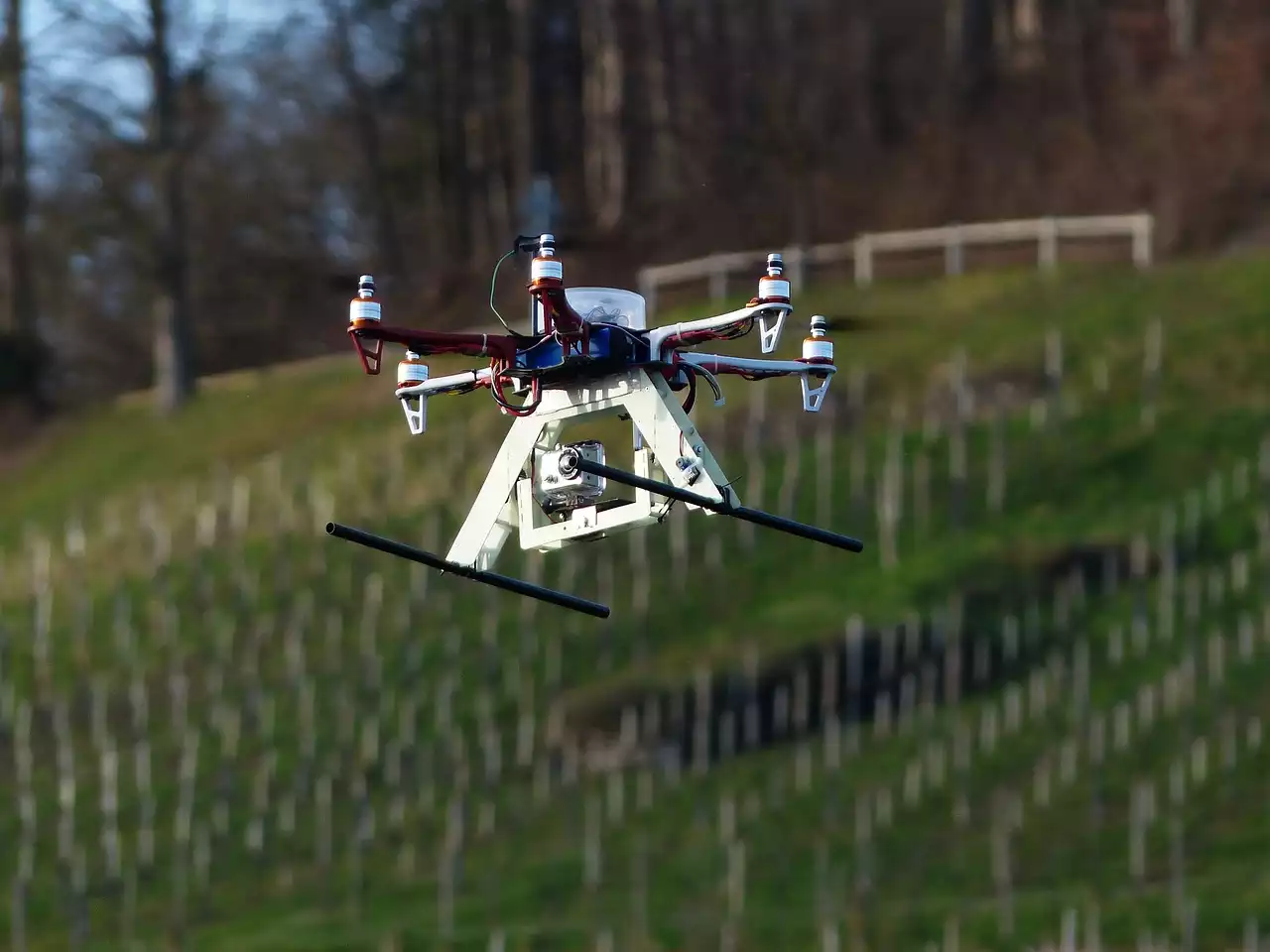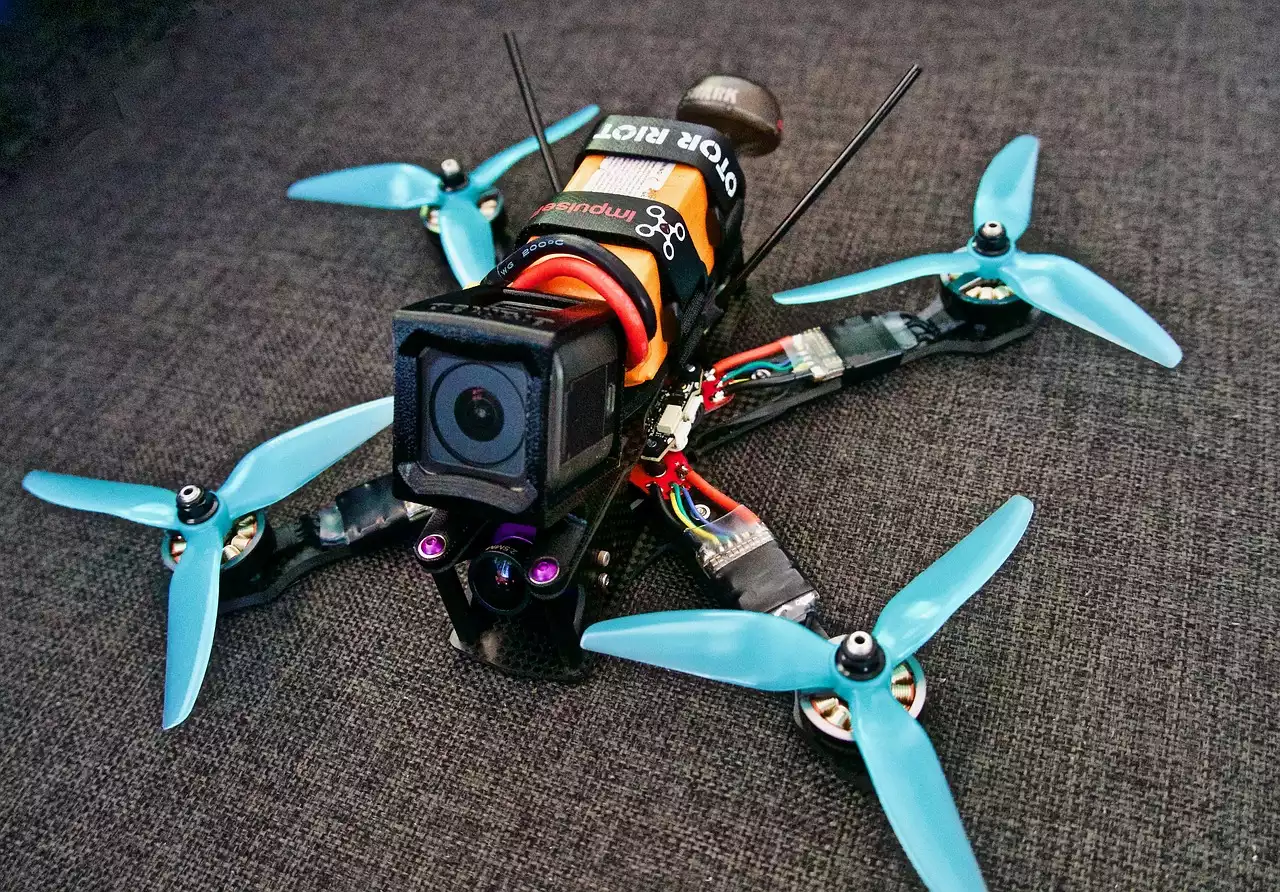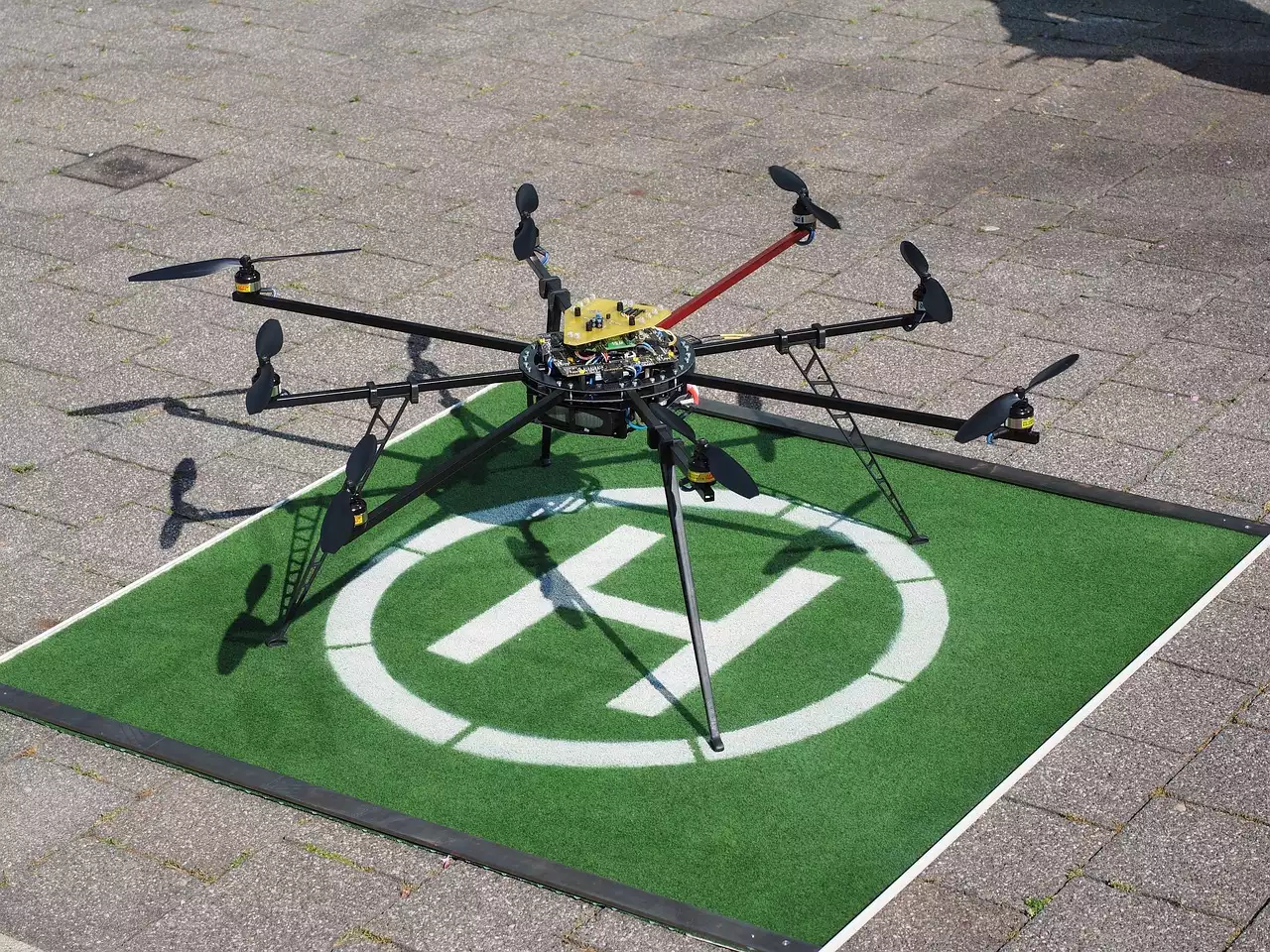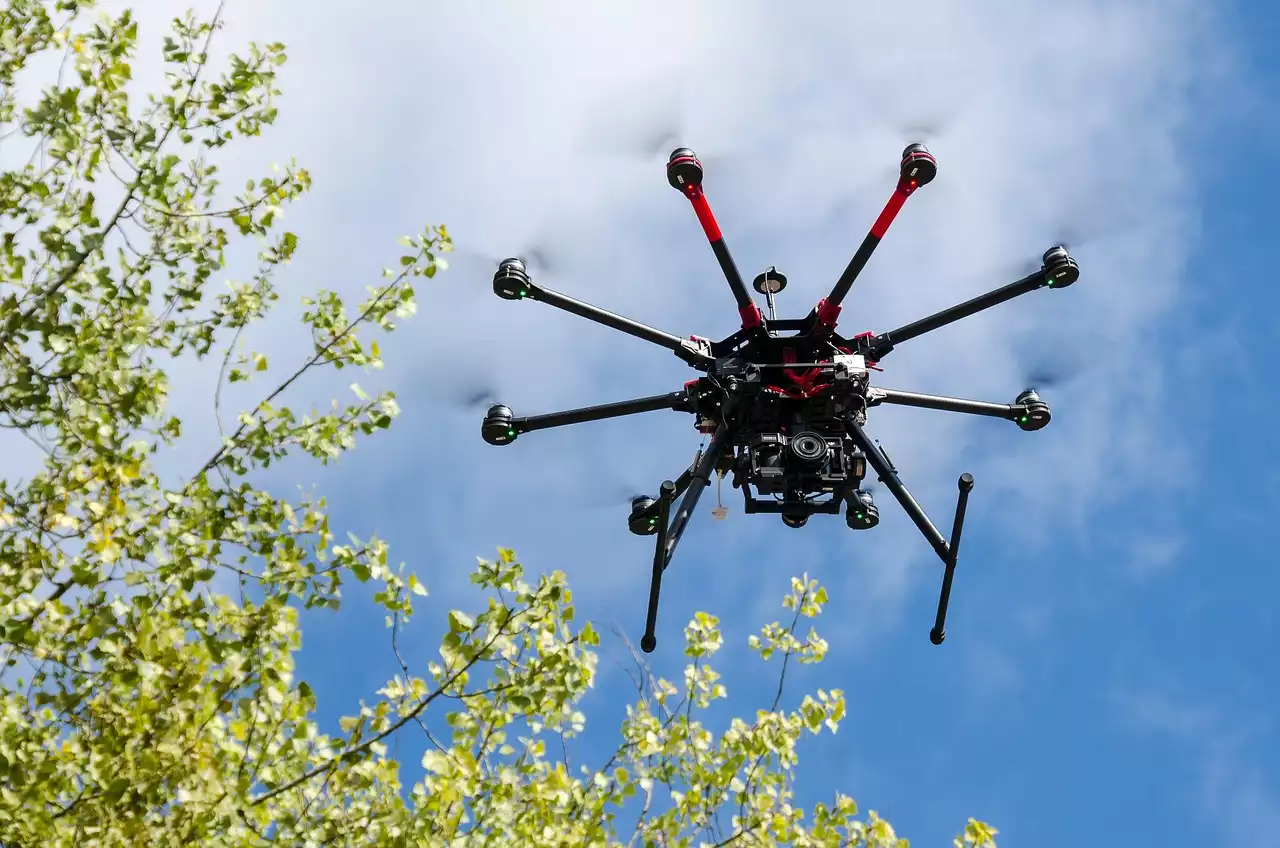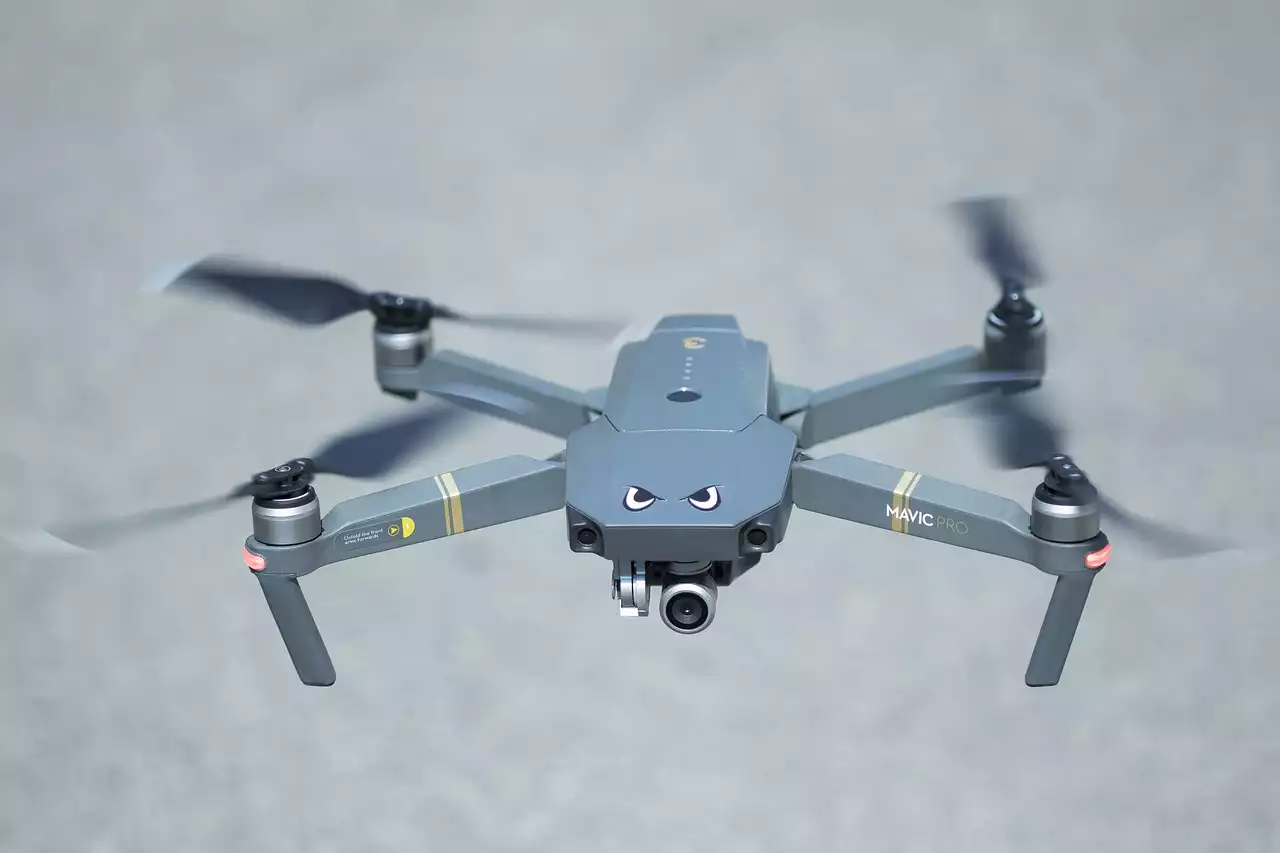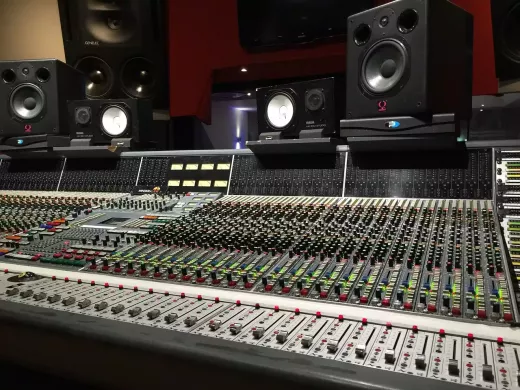What are fixed-wing hybrid VTOL drones?
Fixed-wing hybrid VTOL drones are unmanned aircraft that can be used in a variety of applications, including commercial and recreational activities. These drones are similar to conventional fixed-wing aircraft in that they can travel long distances in an aerodynamic manner via a horizontal flight path. However, they also have helicopter-like capabilities, including vertical takeoffs and landings. Similarly to VTOL drones, fixed-wing hybrid drones can be categorized into two main types: WFH (wing-borne FH) and WFH (fuselage-borne FH). While WFH drones are propelled by a rotor in the vertical position and fixed wings in the horizontal position, WFH drones make use of a propeller that is placed inside the fuselage, below the wings.
Pros of fixed-wing hybrid VTOL drones
There are many advantages to using fixed-wing hybrid VTOL drones, including efficiency and versatility. They are more fuel-efficient than helicopters and can fly faster, farther, and more economically than conventional fixed-wing aircraft. You can also launch them vertically, which allows for efficient takeoffs and landings. Moreover, fixed-wing hybrid drones can be used in a variety of different capacities, from surveillance to package delivery. They are also easy to operate, with simple flight controls and user-friendly interfaces. Whether you are a professional or a recreational user, a fixed-wing hybrid drone is a good choice for flying long distances and covering large areas. Finally, fixed-wing hybrid VTOL drones are relatively easy to maintain and repair. You can replace their parts individually, making it easy to troubleshoot and repair any issues.
Cons of fixed-wing hybrid VTOL drones
While there are many advantages to using fixed-wing hybrid VTOL drones, there are also some disadvantages. One of the main issues is the cost of these drones, which can be prohibitively expensive for most users. Fixed-wing hybrid VTOL drones are more expensive than helicopters and many fixed-wing aircraft, making them accessible only to commercial entities and well-funded hobbyists. Another issue is the complexity of fixed-wing hybrid drones. Because they feature multiple components, including rotors, fixed wings, and propellers, it is more difficult to troubleshoot issues. However, the increased complexity is beneficial in the long run, as it increases both performance and functionality. Moreover, because fixed-wing hybrid VTOL drones have both vertical and horizontal capabilities, they have a large footprint, making them unsuitable for indoor use. This can be an issue not only for their owners but also for their neighbors.
Applications of fixed-wing hybrid VTOL drones
Fixed-wing hybrid VTOL drones are suitable for a variety of applications, including commercial and recreational use. For commercial use, fixed-wing hybrid VTOL drones can be used for things such as package delivery, public safety, infrastructure inspection, agricultural monitoring, and search and rescue. For recreational applications, fixed-wing hybrid VTOL drones can be used for racing, photography, videography, wildlife observation, and more. They can be especially helpful in areas that helicopters cannot reach, such as dense forests, or mountainous areas where it is difficult for fixed-wing aircraft to travel. Fixed-wing hybrid VTOL drones can also be used for long-distance travel, as they are more fuel-efficient than conventional fixed-wing aircraft.
Cost of fixed-wing hybrid VTOL drones
Hybrid VTOL drones tend to be more expensive than their fixed-wing counterparts. Depending on the model, a fixed-wing drone can range in price from $800 to $10,000, while a hybrid VTOL drone can range from $10,000 to $50,000. As with any purchase, price is only one consideration when choosing a drone. You should also consider the features of each model, as well as the manufacturer’s reputation.
Maintenance requirements of fixed-wing hybrid VTOL drones
Fixed-wing hybrid VTOL drones are relatively easy to maintain, as most parts are replaceable and can be serviced individually. The most important parts to keep an eye on are the batteries, rotors, and propellers. Similarly to helicopters, fixed-wing hybrid drones have rotors that need to be inspected regularly for wear and tear. Propellers should also be inspected for balance and wear and replaced as needed. Moreover, batteries should be charged regularly, and it is recommended that you use a battery charger/discharger when in long-term storage. Finally, you should always use the recommended charging voltage for your batteries.
Safety considerations of fixed-wing hybrid VTOL drones
Hybrid VTOL drones are more complex than conventional fixed-wing aircraft, and therefore they have more safety considerations. However, with proper precautions, fixed-wing hybrid VTOL drones can be safe to operate. You should always conduct proper pre-flight checks and piloting procedures, and you should always use a piloting app if applicable. Additionally, you should familiarize yourself with all of the drone’s controls and alerts, and you should have an appropriate flying area that is free of obstacles. Moreover, you should always maintain a safe distance when flying your drone, and you should always adhere to your local drone regulations.
Regulations for fixed-wing hybrid VTOL drones
Before you buy or fly a fixed-wing hybrid VTOL drone, you should be aware of your local drone regulations. Most countries have specific regulations for drone ownership and operation, with different rules for commercial and recreational users. You should check to see if your area requires drone registration, and if so, what model you should be registering. You should also check for any regulations on flying your drone, such as altitude restrictions, or no-fly areas. You should also check to see if your model requires a specific pilot’s license or other certification.
